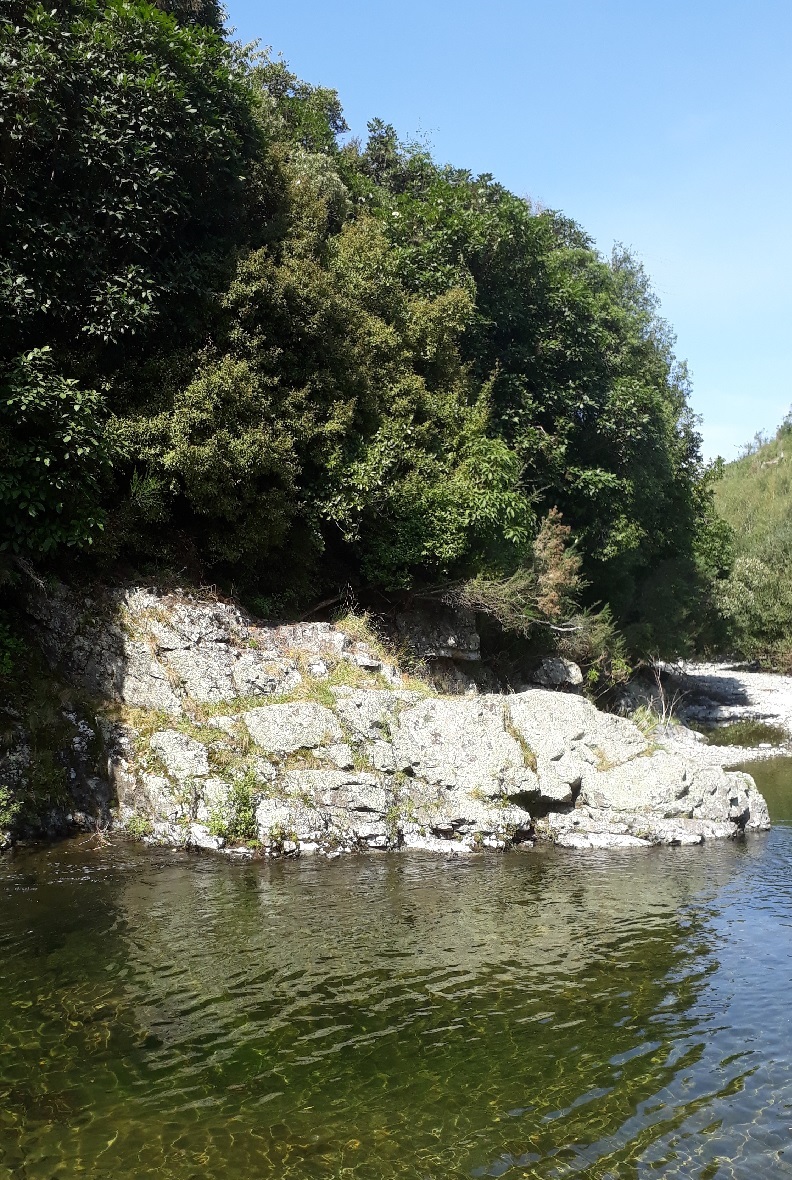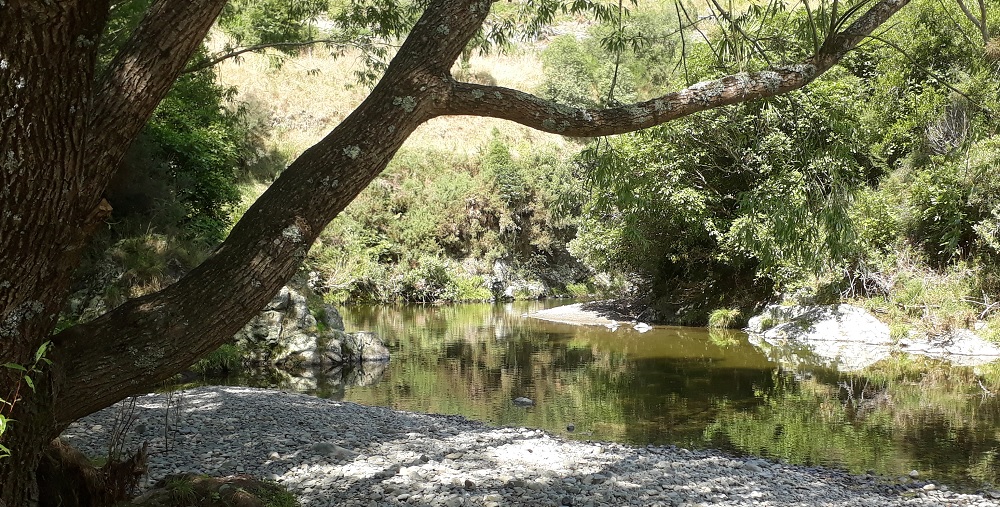 There are three camp sites in Te Moana Gorge, all within 2km of each other alongside the babbling waters of the Hae Hae Te Moana River.
There are three camp sites in Te Moana Gorge, all within 2km of each other alongside the babbling waters of the Hae Hae Te Moana River.
The bush is remnant of the vast podocarp forest that once covered the Canterbury foothills. Best known of the podocarp family of trees are rimu, kahikatea, mataī, miro and tōtara. In its natural state, a podocarp forest can be lush with a dense undergrowth of shrubs, ferns and tree-ferns.
Podocarps like all plants in the conifer family reproduce using cones, but podocarp cones are extremely modified and look more like berries. These are attractive to birds which help to spread the seeds.
Listen for the distinctive calls of the bellbird (korimako) and the grey warbler (riroriro). Keep an eye out for the cheeky fantails (piwakawaka) as they flit from branch to branch and the New Zealand pigeon (kereru), another frequent visitor.
If you are really lucky you may get to see a whio, our very special native blue duck. Look out for the black edges on its bill.
The rock cliffs and trees of The Te Moana Gorge are also home to the native long tailed bat (pekapeka).
Further on up the Te Moana Gorge is the spectacular waterfall and walking tracks.
Maximum stay 3 nights (please arrive after 4pm and leave before 10am)
Please camp responsibly:
Always use a toilet
Please don’t litter
Respect your fellow campers
Be prepared
There is a total fire ban
Weather in New Zealand can change unexpectedly so make sure you check the forecast for any warnings and always carry appropriate provisions.
We appreciate your help in preserving the beauty of our District by camping responsibly and protecting our natural environment.
Please enjoy your stay.

Last updated: 19 Dec 2022



